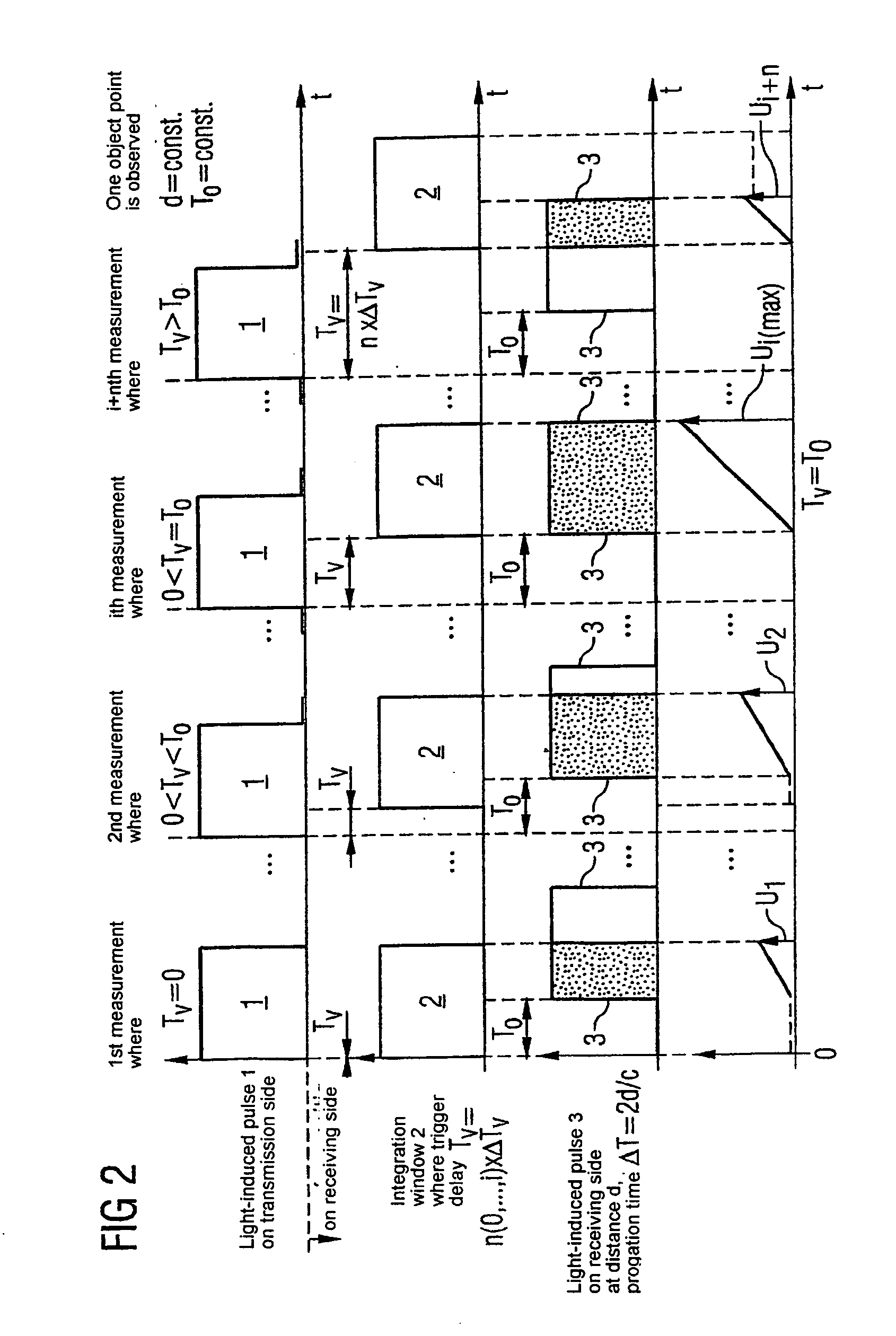Method and device for recording a three-dimensional distance-measuring image
a three-dimensional distance and image technology, applied in distance measurement, surveying and navigation, instruments, etc., can solve the problem of limited integration time, which is limited to about 30 ns, and achieves high signal level, easy evaluation, and relatively fast evaluation
- Summary
- Abstract
- Description
- Claims
- Application Information
AI Technical Summary
Benefits of technology
Problems solved by technology
Method used
Image
Examples
Embodiment Construction
[0019]The total 3D scene to be measured is illuminated for an image record serially with short light-induced pulses with starting times in nanoseconds. The emission of the light-induced pulse is started via a trigger which is predetermined for each measurement process by a control and processing unit (FIG. 1). A part of the trigger signal is simultaneously guided via a programmable delay line and serves as the starting signal for opening the electronic shutter on the CMOS photosensor according to a predetermined time delay Tv with increments in the 1 / 10 nanosecond range, said shutter being closed again after a certain brief integration time (for example 30 ns). This is synonymous with the opening of a time window for receiving backscattered light-induced pulses 3. Incoming light-induced pulses may be integrated in an opened time window. The integration time, i.e. the duration that the window is open, is ideally selected as being equal to the duration of a light-induced pulse.
[0020]T...
PUM
 Login to View More
Login to View More Abstract
Description
Claims
Application Information
 Login to View More
Login to View More - R&D
- Intellectual Property
- Life Sciences
- Materials
- Tech Scout
- Unparalleled Data Quality
- Higher Quality Content
- 60% Fewer Hallucinations
Browse by: Latest US Patents, China's latest patents, Technical Efficacy Thesaurus, Application Domain, Technology Topic, Popular Technical Reports.
© 2025 PatSnap. All rights reserved.Legal|Privacy policy|Modern Slavery Act Transparency Statement|Sitemap|About US| Contact US: help@patsnap.com



